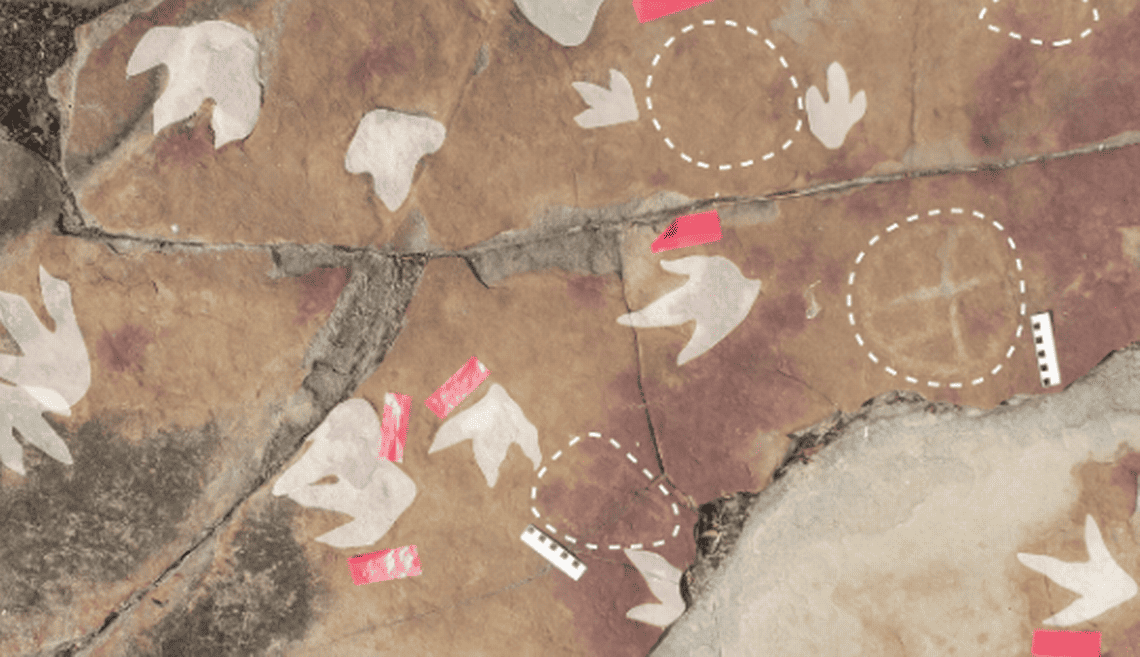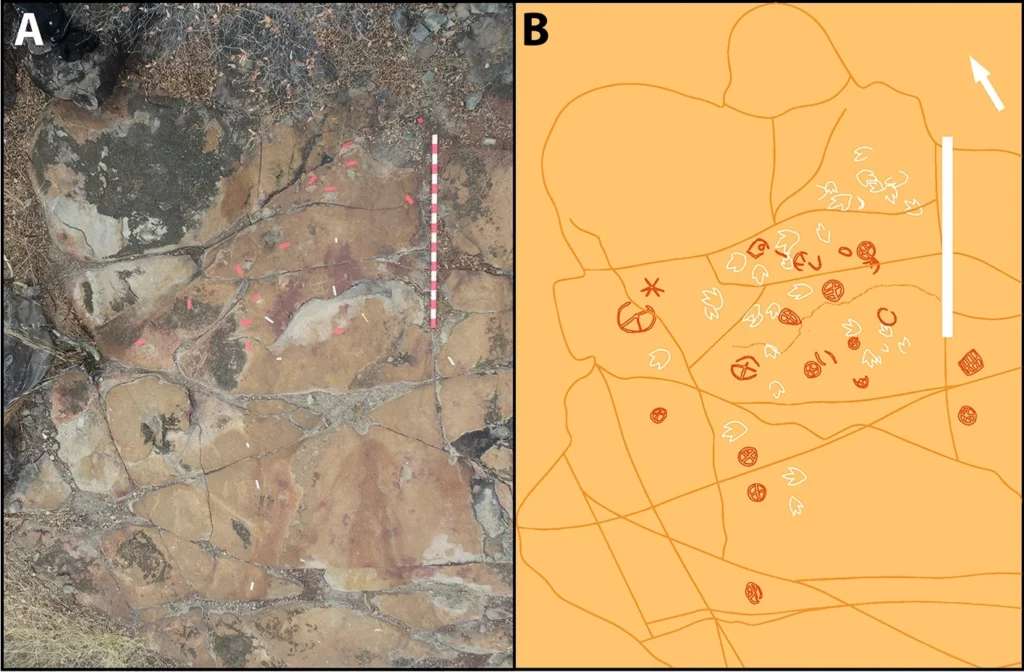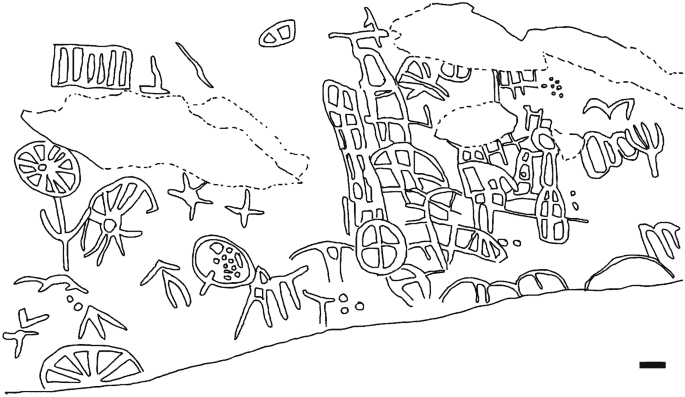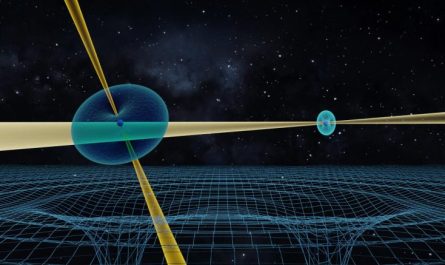
Scientists exploring the rocky Sousa Basin in Brazil have come across a unique convergence of paleontology and archeology. It is there, among three “lajeiros”, or rock outcrops, that the scientists found remarkably well-preserved fossilized tracks from theropod, sauropod, and iguanodontian dinosaurs dating back to the Early Cretaceous Period. Very close to the dinosaur footprints — just inches away in some places — dozens of indigenous, circular-like petroglyphs made by ancient people decorate the rocks.
The surprising connection between prehistoric people and dinosaurs
This pattern of petroglyphs positioned close to dinosaur footprints is not unique to Brazil, having been observed in Australia, Poland, and the United States. A petroglyph is a prehistoric drawing or carving on rock, created by removing part of the rock surface by incising, picking, carving, or abrading. It’s a form of prehistoric art, alongside the vivid cave paintings in Lascaux, France, or Altamira, Spain, which famously capture the essence of ancient life through intricate depictions of hunting scenes and wildlife.


However, the Serrote do Letreiro site in Brazil stands out because we’ve never seen such markings so close together. The very deliberate placement of the carvings around the dinosaur footprints suggests a meaningful connection between the prehistoric artists and whatever they thought those footprints belonged to.
Special care was taken by the artists not to disturb the fossils, according to researchers at the National Historic and Artistic Heritage Institute in Brazil. Some of the carvings even mimic the footprints of the dinosaurs, matching the round base of the sauropod foot or the three toes on a theropod. They probably recognized the mysterious nature of these footprints which never disappeared, unlike wet footprints they were used to that disappeared with the next rain.
Careful carving
“The petroglyphs were first carved by scraping with light contact between an abrasive instrument and the rock surface. Irregularities are observed on the inner edges of the rock grooves, a result of fast movement, causing friction between the instrument and the surface. Many of the petroglyphs underwent subsequent pecking so that the engraving line was refined by a series of continuous impacts using a sharp instrument,” the researchers wrote in their study that appeared in Scientific Reports.
Other similar rock artwork was found in other sites in the region, aptly known as Dinosaur Valley. The artists employed the same method of execution and exhibited a strong preference for the same kind of rock surfaces, close to water sources. This suggests that they all might have belonged to the same social group.


Burials close to the sites helped the Brazilian researchers date the petroglyph to sometime between 9,400 and 2,620 years ago. The footprints are obviously much older, at least 65 million years old.
A timeless fascination
It’s extraordinary to see how our ancestors were just as fascinated by the old and mysterious as we were. This is why conserving these unique and remarkable sites at Dinosaur Valley is crucial, something that the researchers underscore in their paper. The site’s outdoor setting exposes it to the elements, leading to natural wear that can erase these ancient marks over time. Human activities, including tourism and unauthorized access, can accelerate this damage.
“Through this preliminary assessment, critical safeguarding measures stand out, such as the need to implement appropriate signs for visitors, highlighting the location of the site, and instructing tourists on fundamental visitation procedures. Similarly, the feasibility of creating 3D replicas of both footprints and petroglyphs is raised, as a form of recording and safeguarding both records,” the authors write.
Thanks for your feedback!

